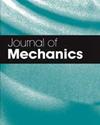非对称流场下不同条件下的纳米颗粒分离--流动分馏
IF 1.8
4区 工程技术
Q3 MECHANICS
引用次数: 0
摘要
随着半导体制造进入 10 纳米以下和三维堆叠时代,工艺中的 "清洁度 "成为影响工艺产量的关键因素。测量制造过程中可能造成污染的各种溶液中的纳米粒子浓度、尺寸和形状是当前的一个重要研究课题。虽然目前已有多种纳米粒子测量技术,但在测量低浓度和复杂混合物的纳米粒子方面,仍需要进一步的技术发展和突破。因此,在本研究中,我们尝试将非对称流场流分馏(AF4)与动态光散射(DLS)和紫外线(UV)相结合,以解决混合颗粒带来的测量难题。该策略包括在测量前分离样品。对于含有直径分别为 20 nm、40 nm、60 nm、80 nm 和 100 nm 的五种不同尺寸金纳米粒子 (AuNPs) 的纳米混合物,在洗脱阶段采用了三种不同的方法来控制粒子分离的驱动力:恒定交叉流速、线性递减交叉流速和指数递减交叉流速。结果表明,不同的流速控制方法确实会产生不同的纳米粒子分离效果,其中恒定流速法的分离效率最高。此外,还观察到实验箱的厚度对纳米粒子在分离过程中的停留时间有很大影响。本文章由计算机程序翻译,如有差异,请以英文原文为准。
Nanoparticles separation by different conditions at asymmetric flow field- flow fractionation
As semiconductor manufacturing enters the era of sub-10 nm and 3D stacking, “cleanliness” in the process becomes a crucial factor for process yield. The measurement of nanoparticle concentration, size, and shape in various solutions that may cause contamination during the manufacturing process is currently an important research topic. Although there are various nanoparticle measurement techniques available, further technological development and breakthroughs are still needed for measuring low concentrations and complex mixtures of nanoparticles. Therefore, in this study, we attempted to address the measurement challenges posed by mixed particles by applying Asymmetric Flow Field-Flow Fractionation (AF4) in combination with Dynamic Light Scattering (DLS) and Ultraviolet (UV). The strategy involved separating the samples before measurement. For a nanomixture containing five different sizes of gold nanoparticles (AuNPs) with diameters of 20 nm, 40 nm, 60 nm, 80 nm, and 100 nm, three different methods were employed to control the driving force for particle separation during the elution stage: constant cross flow rate, linearly decreasing cross flow rate, and exponentially decreasing cross flow rate. The results demonstrated that different flow rate control methods indeed yielded variations in nanoparticle separation, with the constant flow rate method showing the best separation efficiency. Additionally, it was observed that the thickness of the experimental chamber played a significant role in affecting the retention time of the nanoparticles during separation.
求助全文
通过发布文献求助,成功后即可免费获取论文全文。
去求助
来源期刊

Journal of Mechanics
物理-力学
CiteScore
3.20
自引率
11.80%
发文量
20
审稿时长
6 months
期刊介绍:
The objective of the Journal of Mechanics is to provide an international forum to foster exchange of ideas among mechanics communities in different parts of world. The Journal of Mechanics publishes original research in all fields of theoretical and applied mechanics. The Journal especially welcomes papers that are related to recent technological advances. The contributions, which may be analytical, experimental or numerical, should be of significance to the progress of mechanics. Papers which are merely illustrations of established principles and procedures will generally not be accepted. Reports that are of technical interest are published as short articles. Review articles are published only by invitation.
 求助内容:
求助内容: 应助结果提醒方式:
应助结果提醒方式:


